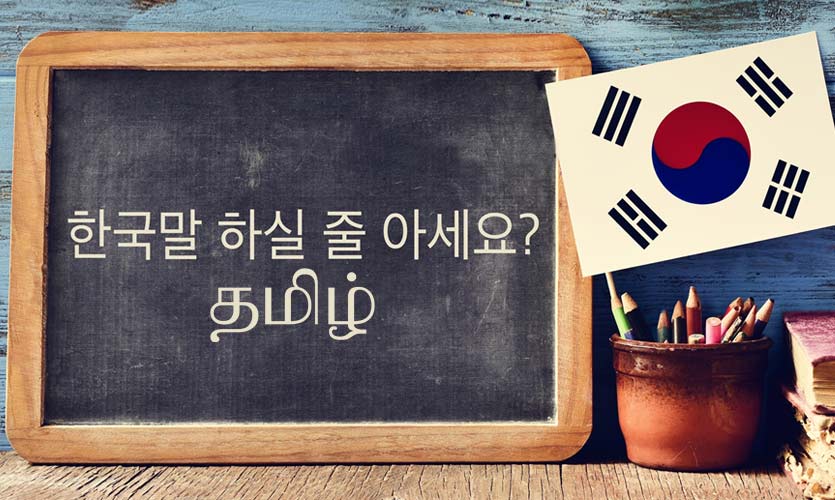The threads of culture amongst the Asian countries have always been interconnected, whether it is customs, traditions, or food. This resemblance also extends to languages like Korean and Tamil. The link was first discovered in 1905, by the French missionaries in Korea, but currently, as we ride on the Hallyu or Korean wave, the intrigue in the connection has piqued.
So, exactly how similar are these two languages? Nandini Menon, a faculty at the InKo Centre in Chennai suggests that the two languages have as many as 3000 same or similar sounding words. Meanwhile, comparative linguist Kang Gil-un has observed that the two languages have at least 1300 cognates, which means they’ve heavily influenced each other, or their origins lie in the same parent language. While some of the words are identical in both, like Amma (mother) and Appa (father), other share a similarity, like naan (I), of Tamil, becomes naa in Korean, nee (you) becomes noe, pal (tooth) becomes ippal, and pullu (grass) of Tamil becomes pull for Koreans.
If we look at the grammatical structures of both the languages, they follow the SOV (subject-verb-object) order, unlike English, which uses the SVO (subject-verb-object) order. Although in Tamil, the object-subject-verb structure is also commonly used conversationally. Another striking similarity shared by them is that, both of them allow null-subject sentence formation – which means the subject is usually understood and doesn’t have to be explicitly mentioned while speaking. A popular example of this could be the term ‘Saranghae’ in Korean, which when translated precisely, means ‘Love you’ but is usually understood to be ‘I love you.’
Korean and Indian languages also have a system of honorification, which means the terms used formally and informally differ, and there are several ways of speaking the same sentence – polite terms, usually used for elders or people you regard highly and casual terms, used for friends, or people younger than you. Tamil language has three levels of politeness used to refer to someone, whereas Koreans have as many as seven distinct levels of showing respect, depending upon the formality of the situation.
Many historians believe the old legend which states that back in the first century, an Indian princess, Sri Rathna, believed to have belonged to the Southern part of India, had married the then king of Korea, Kim Suro. The union could have birthed the many cultural and linguistic links we see today, and it is also believed that Koreans with the last name ‘Kim,’ is genetically related to the Dravdians. A more plausible reason stated by some linguists is the ancient sea trade links between both the countries, which might have led to the exchange of cultural entities.
Read more: Bunny Chow: The Indian Origins Of A South African Delicacy










